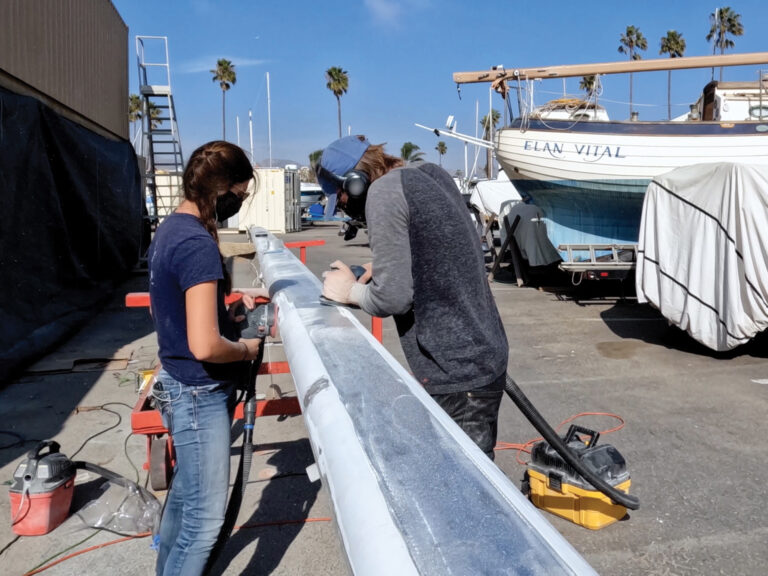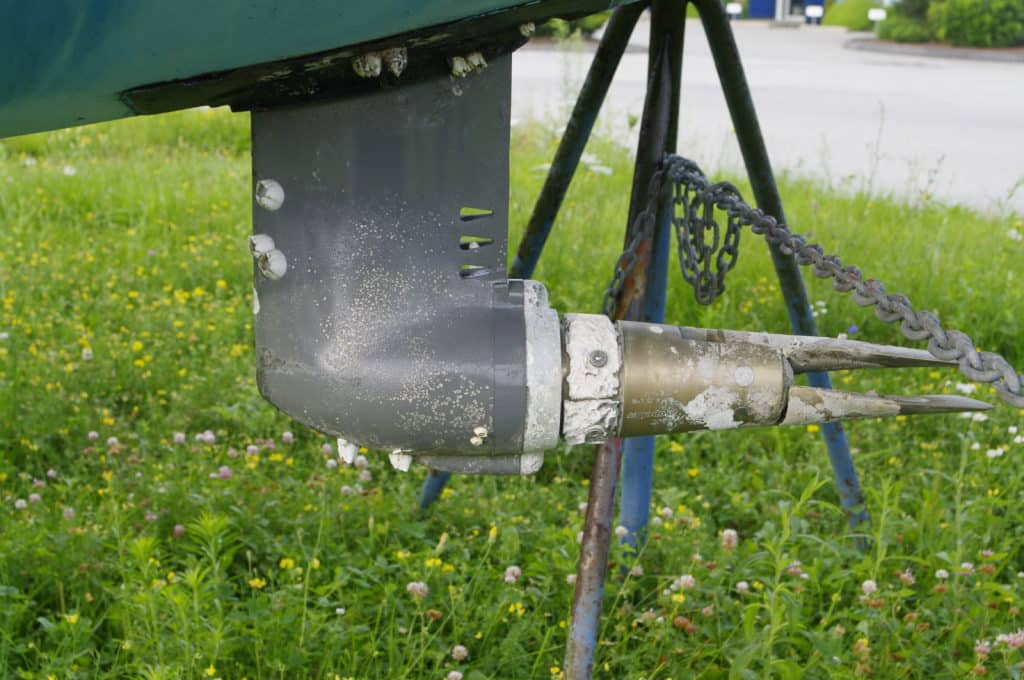
If you are looking at a new or used boat, one of the things you need to consider is the propulsion drive system. As one of Cruising World’s Boat of the Year judges for the past decade or so, I’ve observed firsthand the proliferation of saildrives both in multihulls and monohulls. Of the 24 new boats we inspected during our 2017 Boat of the Year competition, only three had traditional shaft-drive systems. One had outboard engines, one had an electric-motor drive and the rest were all saildrives.
This is all quite understandable from a boatbuilder’s perspective. Once a new hull mold is made or modified, it is much easier for a builder to install a saildrive, reducing labor costs considerably. Additionally, because the entire drive system is supplied by the engine manufacturer, warranty issues related to the drivetrain get passed on to them and claims are out of the boatbuilder’s scope of liability. In the case of shaft drives, engine warranties end at the coupling that connects to the propeller shaft. The rest is on the boatbuilder.
Since saildrives are only available for engines up to 80 horsepower, we do still see traditional shaft drives on larger cruisers and in cases where builders of midsize sailboats are adamant about the reliability and simplicity of the traditional propulsion systems. All this said, our BOTY testing suggests that boats equipped with saildrives tend to run more quietly. Let’s examine the pros and cons of each system along with some insight on things you need to consider if you are looking at used boats.
Current Affairs
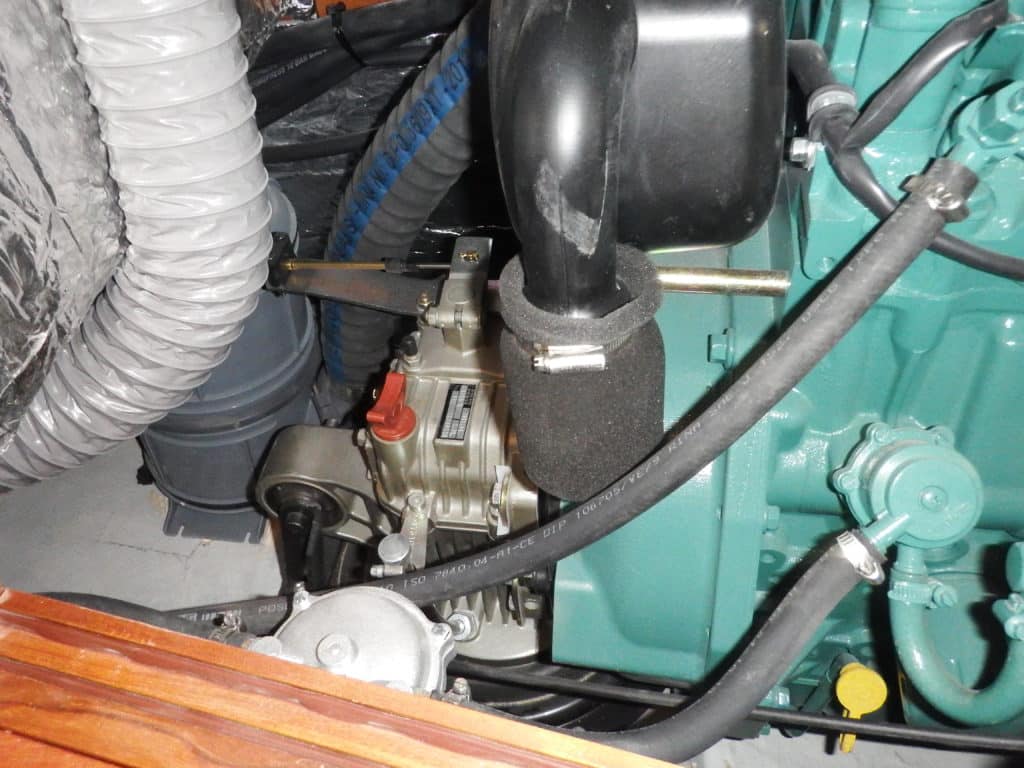
Back in 2011, I penned a piece titled “Beware the Unprotected Saildrive”. Back then, the biggest singular problem related to saildrives was excessive corrosion, and that article focused heavily on explaining ways to mitigate the issue. Well, time marches on, and the saildrives I discussed in that article are now a few years older. So, on the used-boat side of this discussion, we have plenty of boats out there with saildrives that have nearly a decade or more years in service, and the question is have they been protected properly with anodes? Have the owners followed engine-manufacturer service-interval recommendations? If you are looking at new boats and are thinking about long-term ownership, or perhaps long-distance cruising to remote areas of the globe, there is plenty to consider as well.
Is corrosion still an issue? Absolutely! It can’t be emphasized enough, aluminum saildrives are extremely vulnerable to corrosion, especially in salt water. It has been such a problem that Yanmar issued a service bulletin back in 2010 addressing the issue. Anode selection and sizing for saildrives is critical, notes the bulletin. Keep in mind that the anode installed on the drive is intended to protect the drive only. Any additional underwater metal on the boat is going to need additional anodes. Anode material is critical too. Rather than zinc, more boats are moving to aluminum-alloy anodes for salt- and brackish-water applications. In freshwater situations, magnesium is the material of choice, but it should never be used in brackish or salt water as it won’t function properly and damage is sure to ensue.
The antifouling paint used both on the drive itself and the entire bottom of the boat should not contain any copper, per Yanmar. Cuprous oxide (copper) is the traditional material used in almost all bottom paints, so you’ll want to be careful when choosing any antifouling.
Above and beyond that, even the slightest chip in the paint on a saildrive will open the door to almost immediate corrosion of the drive housing. The process to repair said chips and ensure proper adhesion and protection is complicated; check the manufacturer’s recommendations.
If your boat is plugged in at a dock most of the time, you will need a galvanic isolator installed in your shore-power system. Without the isolator, you run the risk of your boat’s anode(s) helping to protect one of your dockmates’ boats that may have inadequate protection installed. That scenario will cause your anodes to be depleted much more quickly than normal, exposing your own drive units to potential damage.
The importance of maintaining appropriate levels of “hull potential” — an electrical term that addresses corrosion protection — as prescribed by drive manufacturers is so critical that I would recommend installing a hull-potential meter on any boat equipped with saildrives. This meter tells the operator in real time if they have sufficient anode protection installed.
Regardless of the make or model of your saildrive, following the advice provided in the Yanmar bulletin is going to help you keep corrosion at bay.
Care and Cost of Ownership
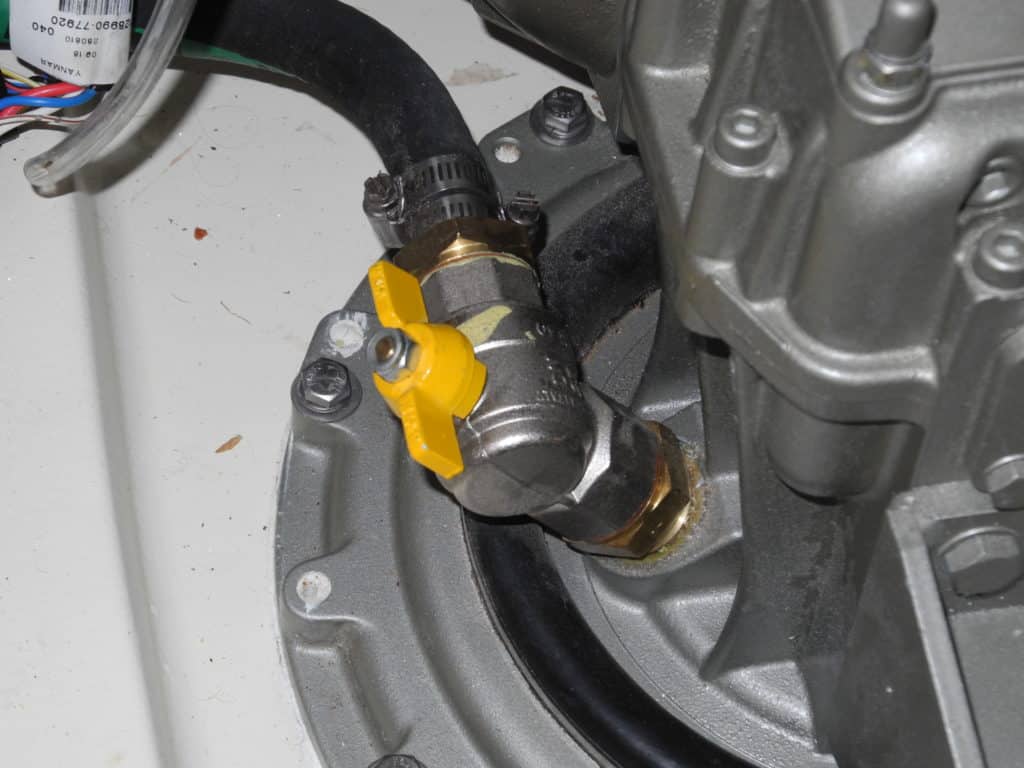
Saildrives are just like outboard engines in the sense that the lower unit of either is where the actual gears for forward and reverse are located, so lubricating oil needs to be sealed in and water must be kept out. The essential difference in the case of the saildrive is that it stays submerged 24/7; besides the threat of corrosion, it makes any leakage a big problem that may go undetected.
From a maintenance perspective, drive makers all recommend at least annual drive oil changes and inspection of the fluid’s color for any sign of milkiness, which indicates water in the oil and lower-unit seal leakage. If contamination is found, a haulout and seal replacement will be necessary.
Besides the unit’s gear-case seals, the drive assembly is sealed around its perimeter with the hull of the boat. This seal was one of my biggest worries about the technology initially, because a failure here would create a significant point of entry for water. It turns out my fears were unwarranted. The history here is quite good, in fact, and I’ve not heard of any failures.
That said, we are at what I believe may be a turning point in the history of saildrives. The major drive manufacturers in the United States, Yanmar and Volvo Penta, recommend replacement of the bladder seals every five and seven years, respectively. But based on my research of some major full-service boatyards, people are not having the work done at the recommended intervals. In fact, a quick scan of some of the major online forums brought me to the J/109 group, where this topic is a major discussion point. It seems many owners are going 10 years and longer before replacing the outer and inner bladder seals on their saildrives. Cost is probably the driving reason for the delay. Pricing that I found varied from $2,500 to $4,000, depending upon the drive’s location and how it was installed. Own a catamaran? Multiply by two.
Basically, replacement of seals requires lifting the engine off its bed so the work can be performed. On some boats, access is going to be quite limited and ensure a labor-charge nightmare, and it’s a task that almost certainly transcends the capabilities of most do-it-yourselfers.
One recommended annual check that is not too difficult is to test the moisture sensor installed on most units to indicate water intrusion past the outer seal. It is recommended that annually, an owner or mechanic unscrew the sensor and dip it in a cup of water to see if the alarm warning light goes on.
Close to home at least, an owner would know that if the outer seal did begin to leak, there would be adequate warning that work is needed immediately. I’m not sure how I’d feel about that notification halfway across the Pacific on the way to Tonga, but then again, I think if I were going that far afield with a saildrive-equipped boat, I’d be inclined to replace these seals beforehand.
In fairness, I’ve been on board many monohull cruising boats with shaft drives and drive seals that were inaccessible, perhaps with a generator installed directly over the traditional stuffing box or dripless shaft unit. This is a real issue for any voyager. Research on the resale value of older boats that offered both saildrive and conventional prop shaft-drive setups showed a definite preference toward the shaft-drive configuration. Boats from Canadian builder Hinterhoeller used both saildrives and conventional shaft drives back in the 1980s. The boats equipped with the saildrives have shown about a $10,000 lower price when compared with the shaft-drive offerings.
Shifting Concerns
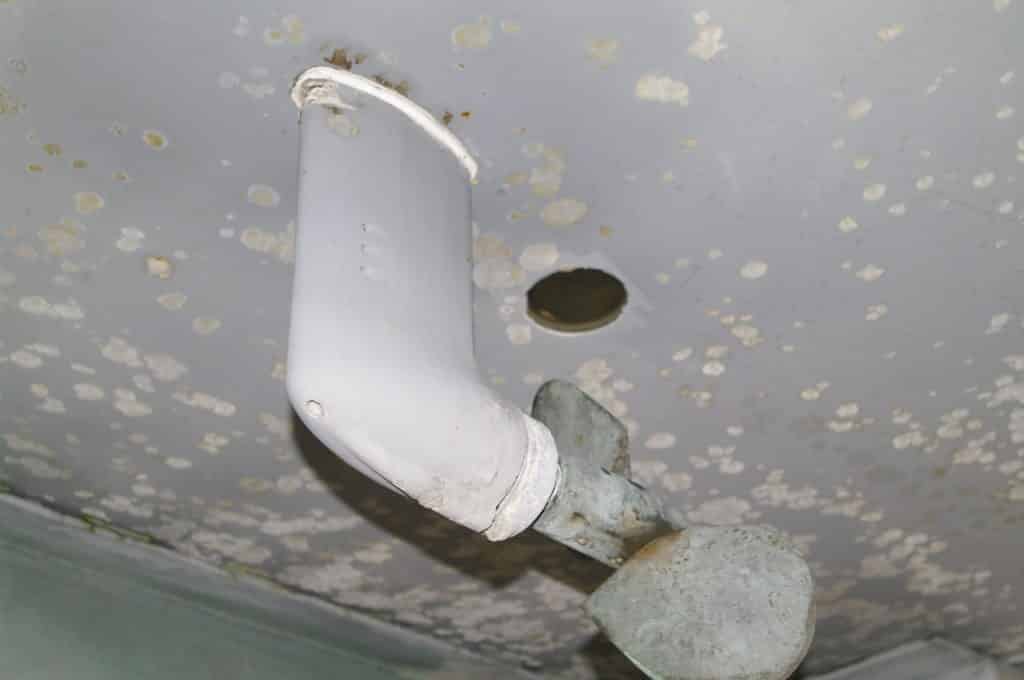
Recent reports from the field indicate there are problems with shifting for both Volvo and Yanmar saildrives. The solutions, like the issues, are considerably different.
Volvo recommends a change in the gear oil used with its units. Originally, the company recommended the use of automotive automatic-transmission fluid. Now it recommends the use of SAE 15W-40 engine oil for all drives made after September 2010. When sailing, one of the questions that often comes up is what to do with the gear shift when the engine is not running to keep the propeller from free-wheeling.
Volvo recommends setting the control lever in reverse if a folding propeller is equipped. If a fixed propeller is fitted, either neutral or reverse is acceptable.
As for Yanmar, the company has plenty of documented problems with its cone-type clutches slipping, most particularly on its SD40 and SD50 models. The SD20 and SD30 models used different clutch designs and do not have any history of issues. Regarding the SD40 and SD50 models, a routine-maintenance requirement is to inspect, replace or “lap” (reseat) the cone clutch mechanisms of the drives every 500 hours, and Yanmar recommends replacement of the cones every 2,000 hours. Most do-it-yourself sailors probably will not be willing to dive into this project, and the numbers I found online for this service topped out at about $4,000! In my online searching, I did find one service bulletin that made recommendations on what to do to upgrade from a model SD40 or SD50 saildrive to the newest SD60 series. The SD60 uses a different kind of clutch mechanism — multidisc versus cone — that doesn’t have the slippage problem. The newest Volvo saildrives also use multidisc clutch mechanisms.
Checking pricing on the Yanmar SD60, I came up with a ballpark retail price of $5,000 for a complete new drive. There are some additional parts required for a conversion, but it’s all quite doable. This price does not include labor. In a nutshell, if I were looking at boats with Yanmar saildrive propulsion, new or used, I’d be checking drive-gear model numbers.
Proven Workhorses
Companies such as Catalina and Hallberg-Rassy still use traditional shaft drives across their model ranges, and the builders say they have no plans to change anytime soon. Larger sailboats also rely on conventional shafts because saildrives are not available for engines above 80 to 85 horsepower.
As I think back on my own experiences servicing boats with shaft drives, all the procedures were relatively easy and, for the most part, fell into a possible do-it-yourselfer’s reality. I never had to worry about a bladder leak causing a boat to sink. I never fretted about an aluminum drive case dissolving out from under the boat due to galvanic corrosion. Shifting was mostly a trouble-free experience. The only major challenges were Cutless-bearing replacement, because it required a special puller to get the job done, and the occasional shaft seal that was inaccessible due to a builder installing too much gear on top of the shaft and stuffing box.
I’m savoring those fond memories because if I were looking for a new cruising sailboat in the 30- to 50-foot range, mono or multihull, it would probably have one or more saildrives installed. We’re looking at a paradigm shift here: No maintenance slackers allowed!
Ed Sherman is education vice president for the American Boat & Yacht Council and a frequent CW contributor and Boat of the Year judge.







